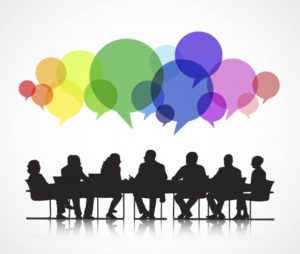 Over the years I’ve attended an assortment of legal conferences that feature continuing-legal-education (CLE) panel discussions. I find that I share a sentiment I’ve seen and heard expressed often enough: that despite the best intentions of the organizers and panelists, panel sessions can be dreary and not particularly helpful.
Over the years I’ve attended an assortment of legal conferences that feature continuing-legal-education (CLE) panel discussions. I find that I share a sentiment I’ve seen and heard expressed often enough: that despite the best intentions of the organizers and panelists, panel sessions can be dreary and not particularly helpful.
Recently I posted on LinkedIn this item containing some general observations on what makes for a successful CLE session. It has been read by a bunch of people, so I thought some of you might find of interest a more specific set of suggestions. So here goes:
Focus on Friction Points
Panel sessions aren’t an efficient medium for instruction. Instead, a basic understanding of any topic can be quickly acquired by reading relevant materials or by watching videos (depending on one’s preference). An in-depth understanding would require reading relevant materials.
Panel sessions are best suited to highlighting for those in attendance, with respect to a given topic, what’s at stake, what’s contentious or uncertain, what steps could be taken, and what to expect in the future. (I refer to these matters collectively as “friction points.”) The aim would be to help participants quickly determine what’s relevant to their situation.
Flipping the CLE Session
Before a panel session, it would make sense to make available to participants a curated set of materials. That would allow those sufficiently interested to become familiar with the topic before the session, so they understand better what’s being discussed. The materials might consist of written materials from diverse sources, as well as videos, including specially recorded videos that serve to introduce the materials and highlight selected issues.
Limiting the session to discussion of friction points and making basic materials available beforehand is analogous to a growing trend in higher education, that of “flipping the classroom.”
More Audience Input
One could structure panel sessions so that those in the audience are able to contribute more. You could invite them to submit questions or comments beforehand, including by video, with some clips being used during the sessions. During the sessions, you could invite the audience to submit questions through the conference app. That allows for greater control than does calling on people who raise their hands.
Designing the Sessions
In the case of membership organizations, usually members (perhaps with input from outsiders) are responsible for choosing topics for CLE sessions, selecting the panelists, and deciding what to cover. An organization might want to consider putting in charge of the process someone—whether a member or an outsider—who understands the practice of law but also has experience in making legal scholarship accessible to practitioners.
Changing the Stagecraft
Having panelists sit behind a table or stand behind a podium puts a barrier between panelists and those in attendance, and it makes for a static presentation. Instead, take a tip from TED Talks and equip presenters with wireless microphones and have them stand, or perhaps give them barstools to perch on when not speaking. And give each presenter some training in public speaking, even if it consists only of sending them links to relevant videos.
There you have it. I’m sure I’m not the only person to have thought about these issues. If you know of any useful resources, please mention them in the comments.

I went to a recent conference where they made very effective use of an app to test what audience members thought of various aspects of the topic under discussion, using votes registered through https://www.sli.do
Took a while for people to get the app running, but then it was a quick and easy way to get input without asking for a show of hands.